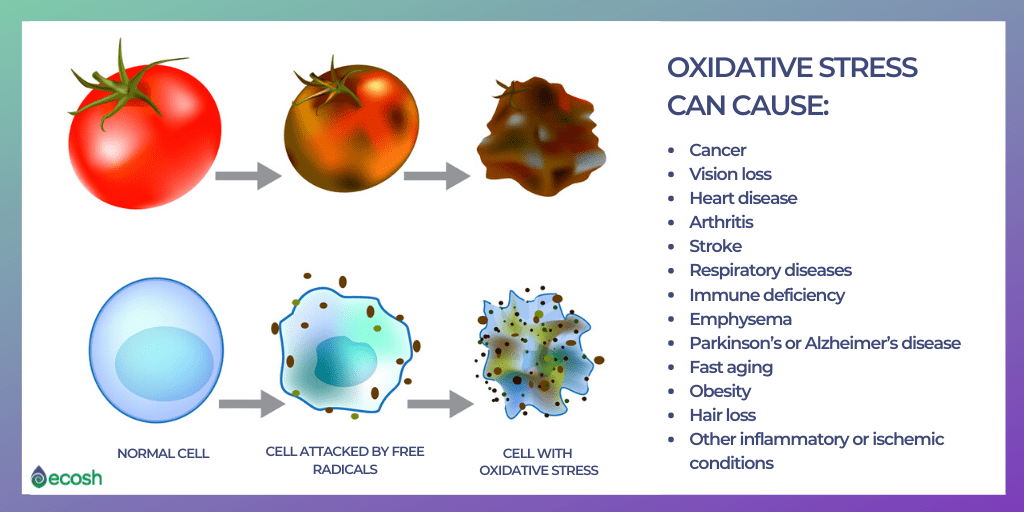Inflammation: Pros of an “Anti” Diet
What is Inflammation?
Inflammation is the immune system’s response to an irritant. There are two major types of inflammation in the body.
Acute inflammation is the body’s natural response in order to repair itself. It is usually manifested by redness, warmth, swelling, and pain around tissues and joints that occur in response to an injury or infection. An example of this would be when you get sick and develop a sore throat. Your body’s immune system would send white blood cells to your throat and work to fight the bacteria or virus. Acute inflammation is a good and necessary function for us to survive. What we want to avoid is chronic inflammation.
Chronic inflammation happens when the body’s inflammatory process continues even when there is no injury to heal, and it doesn’t end for months or even years. An example of this would be continued pain in the joints that those suffering from arthritis typically experience. Symptoms of chronic inflammation may include, but are not limited to: body pain, chronic fatigue and insomnia, depression, anxiety and mood disorders, gastrointestinal complications like constipation, diarrhea, and acid reflux, weight gain or loss, and frequent infections. Long-term inflammation in the body contributes to many diseases such as cancer, diabetes, rheumatoid arthritis, heart disease, obesity, chronic kidney disease, inflammatory bowel disease, Alzheimer’s disease, asthma, and more.
A diet incorporating anti-inflammatory ingredients and minimizing pro-inflammatory ones is key for optimal health and to avoid or minimize the effects of many common diseases we see in the world today.
Anti-Inflammatory Foods
The Mediterranean Diet is full of fresh vegetables.
Many nutritionists agree that the Mediterranean diet (which focuses on fruits, vegetables, whole grains, and fish while minimizing red meat and processed foods) is a great example of anti-inflammatory eating. This eating pattern may be part of the reason for the longevity of people residing in the Mediterranean cities of Sardinia, Italy and Icaria, Greece, which account for 2 out of 5 of the Blue Zones in the world. Blue Zones was a study done by National Geographic Fellow Dan Buettner to find out more about longevity, which “…evolved into the discovery of the 5 places around the world where people consistently live over 100 years old.” Some of the common factors between the 5 places was an anti-inflammatory way of eating and living. (The other 3 Blue Zones were found in Loma Linda, California, Nicoya, Costa Rica, and Okinawa, Japan.)
Key components of an anti-inflammatory diet include:
tomatoes (for their lycopene),
olive oil, walnuts, almonds, fatty fish (for their omega-3s),
leafy green vegetables such as spinach, kale, and collards (for their antioxidants and vitamins),
spices like ginger, turmeric, and rosemary (for their curcumin, gingerols, and carnosic acid),
fruits like berries, cherries, and oranges (for their antioxidants like anthocyanins, ellagic acid, resveratrol, hesperidin, and more)
Many of the antioxidants found in fruits and vegetables protect against the oxidative stress that free radicals cause when too many of them are present in the cells of the body. Oxidative stress is an imbalance between free radicals and antioxidants in the body. When there are too many free radicals and too little antioxidants present, damage to the bodily tissues, lipids, proteins, and even DNA can occur. Eating these antioxidant rich foods can help protect our cells from free radical damage, and in turn, inflammation in the body.
Figure from Ecosh
Pro-Inflammatory Foods
Foods that increase inflammation in the body include added sugars, artificial sweeteners, and highly processed foods. Meats like hot dogs, sausages, and pepperoni, refined carbs, and foods with trans fats or too many omega-6s are some examples of inflammatory foods.
Omega-6s are an essential fatty acid just like omega-3s, but can trigger the body to produce pro-inflammatory chemicals when eaten in excess. Foods containing safflower, sunflower, corn, and soy oils should be eaten less frequently than foods containing predominantly omega-3s, in order to keep inflammation levels in the body lower.
FODMAPS and the Link to Inflammation
FODMAPS can be a source of inflammation for those with sensitive GI tracts such as those who suffer from types of inflammatory bowel disease. FODMAP is an acronym for Fermentable Oligosaccharides, Disaccharides, Monosaccharides and Polyols. Foods high in these types of carbohydrates (such as garlic, onions, and rye) can create distressing digestive symptoms like bloating, gas, stomach pain, diarrhea, and constipation for those who are sensitive to them.
Repeated symptoms like these to the gastrointestinal system can negatively affect the microbiome diversity in the digestive tract and increase inflammation in the body over time.
Other Ways to Reduce Inflammation
Besides our diets, other ways to reduce chronic inflammation in the body include drinking an adequate amount of water, reducing alcohol consumption, reducing or managing stress, achieving and maintaining a healthy weight, controlling blood sugar levels, balancing hormones, and exercising regularly. Having a good social network and feeling a sense of purpose and belonging can also reduce inflammation and improve quality of life.
In conclusion…
Becoming more aware of the foods and lifestyle behaviors we can partake in and avoid can help us know how to improve our inflammation levels. When we learn more about how to reduce our inflammation levels, we can then reduce the likelihood of developing certain diseases and improve not only our lifespan, but our quality of life for years to come.
This article is for purely informational purposes only. If you suspect you are suffering from chronic inflammation, please consult a medical professional.



